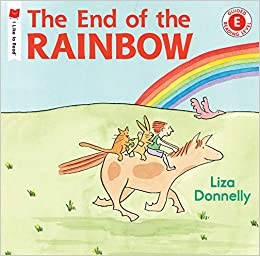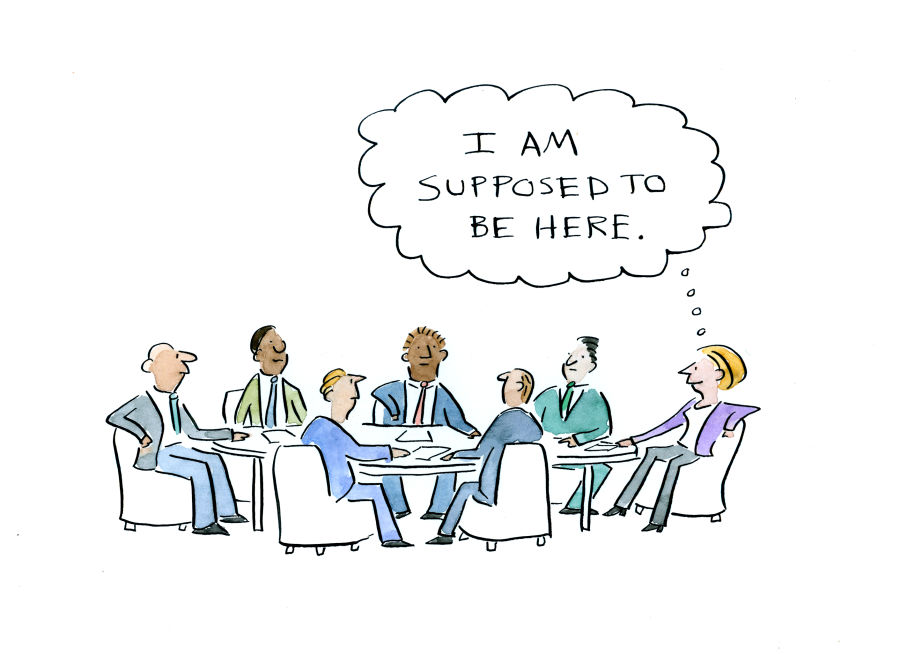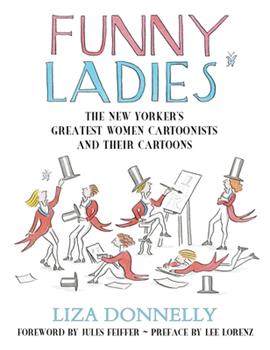–
–
“People respond to my positive approach
and I love that.
People want hope, as do I.
It’s just as easy to be optimistic
as it is to be pessimistic.
It is a choice.”
— Liza Donnelly
–
Liza Donnelly and I go back more than 30 years, except she never actually knew it. As a copywriter and book club editor for Scholastic in the late 80s and early 90s, I loved Liza’s imaginative dinosaur books. I also followed her cartoons in The New Yorker. In fact, there’s a long line of acclaimed New Yorker cartoonists who went on the publish in children’s books (most notably, William Steig). Recently, Liza popped up again on Facebook, and I was thrilled to see her new work. Early during the pandemic, I grabbed this image by Liza and used it for my Facebook Cover art:
–
Beautiful, right? I figured it was time to invite her over to my swank offices her at James Preller Dot Com. After a hasty cleaning — Where did all this old cheese come from? — I opened the windows, lit some incense, and eagerly awaited Liza’s arrival. Here’s she is now . . .
Greetings, Liza. Is everything okay? You look a little drawn. Oh, wait, wrong image!
When I was a junior copywriter at Scholastic (working for a cool $11,500 a year), I wrote various book club kits: SeeSaw, Firefly, and Carnival. I especially liked your book, Dinosaur Day, which was the first in the series of seven books.
That’s great to know. That’s what I got paid in my first job at the American Museum of Natural History, probably around the same time! I enjoyed doing those books for Scholastic and was ready to have the Dinosaur series go forever…but alas it didn’t. The books now live on the internet however, and are e-books for kids. Thanks, Dinosaur Day was a favorite for me, too. I wanted it to be wordless but we ended up with minimal words.
 I still remember, without having seen that book in decades, how the boy’s imaginal life connected to the objects in his room. I loved –- and still very much love –- that idea. The interior and exterior coming together, celebrating the imaginary journey.
I still remember, without having seen that book in decades, how the boy’s imaginal life connected to the objects in his room. I loved –- and still very much love –- that idea. The interior and exterior coming together, celebrating the imaginary journey.
That’s a great observation and I like how you put it, celebrating the imaginary journey. I wanted to show that the little boy was obsessed with Dinosaurs!
I knew you were a New Yorker cartoonist. So many of them got into children’s books, most notably William Steig, James Stevenson, others.
Yes! I was heavily influenced by Steig’s use of color in his books. I loved reading them to my daughters. My favorite was Brave Irene. Also Stevenson was great, a much different feel to his books. I was lucky to meet both men before years ago.
–
–
Stevenson seems a little forgotten these days. He was hugely popular on the book clubs, with favorites such as The Great Big Especially Beautiful Easter Egg (that kid running around with a mustache!) and What’s Under My Bed? He also illustrated a number of Jack Prelutsky’s bestselling poetry collections (The New Kid on the Block, Something BIG Has Been Here, etc). It’s a wonderful honor for you to be a part of that tradition. When I found you on Facebook, I was immediately taken by your current work. The images you are putting out each day. Obviously, we’ve been living in uncharted times.
So true. I have found doing a cartoon a day and broadcasting it on Instagram as I draw (and talk about it) has been a wonderful way to connect with people. Also it helps me be connected with what is going on in the world because I do it every day in a rather public way.
–
–
On a personal level, I tend to go dark at times, which I attribute to my Irish background. I hold grudges and distrust the wealthy and I believe it’s a good idea to get rip-roaring drunk twice a year. Yet you seem intent on putting forward positive messages with your work.
That’s so funny you say that because I am also of Irish heritage, you undoubtedly noticed. I think the Irish may distrust the wealthy for sure and hold grudges (never heard that), and that they/we can go dark. I go dark all the time. But we also tend to be poetic and with the dark you have to notice the light. People respond to my positive approach and I love that. People want hope, as do I. It’s just as easy to be optimistic as it is to be pessimistic, it is a choice. That doesn’t mean I don’t notice how horrible things are in the world, I do.
I remember talking to my good friend, illustrator Jennifer Sattler, after Donald Trump was elected. We were like, How do we live in this new world? And she said that she heard someone’s podcast, she never could recall the source, where the speaker said, “Do what you’ve always done, but with new purpose.” That made a lot of sense to me.
That’s wonderful. I felt that way after 9/11. I was so distraught by the event that I was about to change careers and give up cartooning. Then I drew a cartoon about it and it was bought and run by The New Yorker (“Daddy, can I stop being worried now?) and I felt back on track. I decided to spend more time drawing about global politics than ever before. With Trump, it was not easy to figure out how to approach him because I don’t particularly enjoy ridiculing people.
In the meantime, you are still making books. What’s your most recent?
My most recent book was Women On Men, a collection of my cartoons and writing about women making fun (lovingly) of men. I also did two kids books  for Holiday House in recent years. Interestingly, after I stopped with Scholastic in the 1990’s, I tried to sell these two ideas for books, and no one would buy them. I showed them to Holiday House after they sat in my drawer for ten years…and they bought both!
for Holiday House in recent years. Interestingly, after I stopped with Scholastic in the 1990’s, I tried to sell these two ideas for books, and no one would buy them. I showed them to Holiday House after they sat in my drawer for ten years…and they bought both!
–
I am currently working on a new edition of my history of the women cartoonists of The New Yorker. It’s to be called Very Funny Ladies, due out this fall.
–
Thank you so much for your time, Liza. It’s really nice to connect with you after admiring your work for all these years. I very much appreciate what you are putting out into the world right now. How can people find you?
Thanks so much for reaching out! And for your kind words. I feel lucky to be able to do what I love, which is draw and connect with people. Folks can find  me on Instagram, Twitter, and Facebook: @lizadonnelly. Watch me draw every weekday at 5pm ET on Instagram and a new startup called HappsTV every day at 6pm ET: happy.tv/@liza . My website is lizadonnelly.com. A lot of my political cartoons and writing is found on Medium: lizadonnelly.medium.com And some writing and cartoons on The New Yorker website.
me on Instagram, Twitter, and Facebook: @lizadonnelly. Watch me draw every weekday at 5pm ET on Instagram and a new startup called HappsTV every day at 6pm ET: happy.tv/@liza . My website is lizadonnelly.com. A lot of my political cartoons and writing is found on Medium: lizadonnelly.medium.com And some writing and cartoons on The New Yorker website.
–
–
 James Preller — um, that’s me, and so awkward in the 3rd person — is the author of the Jigsaw Jones mystery series, ages 6-8. Coming this Spring, look for my new middle-grade novel, Upstander. Thanks for stopping by. Onward and upward with the ARTS!
James Preller — um, that’s me, and so awkward in the 3rd person — is the author of the Jigsaw Jones mystery series, ages 6-8. Coming this Spring, look for my new middle-grade novel, Upstander. Thanks for stopping by. Onward and upward with the ARTS!













